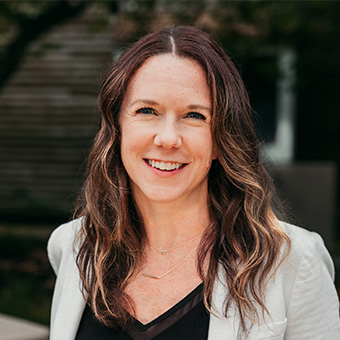
How to Build Your Creative Team
For a smaller agency, we’ve been fortunate to experience a good amount of growth over the years. That means we’ve been through the sometimes-difficult process of interviewing and narrowing down a pool of candidates. Here are some of the things we’ve learned about building a creative team and cutting through the weeds to find the best fit for your company.
Identifying Your Needs
The first step in building a successful team is to identify what roles you need to fill. In general, you will either need to fill the following roles and skill sets in-house, or look to source them from an agency or freelancer:
- Designer / creative director: This role has the creative vision to build your brand identity and the design skills to actually implement it. In addition to a strong creative sense, this role needs to be familiar with the most recent design tools and be comfortable with real world production specifications and best practices, such as how to package a file for a printer. Depending on the scope of creative work that’s needed to support your vision, you may need an entire team to cover this.
- Marketing manager / digital marketer / content marketer: “Marketing manager” can mean a lot of things, but bottom line – you need someone to build your marketing strategy and pull together all of the tactics to execute on it. This role needs some knowledge of planning, budgeting, project management, writing, digital marketing and perhaps even video production. You aren’t going to be able to find one person who can successfully deliver on all of those roles, so identify the priorities that are most critical for you to start, and work from there.
- Programmer / web services: Without a solid web presence, you risk becoming digitally obsolete. This role should be very fluent in the backend of your website and knowledgeable about factors like SEO and UX (user experience). Ultimately, you’ll need someone (or multiple someones) with both database and server knowledge as well as front-end CSS knowledge. This role is responsible for staying up-to-date on the latest best practices and keeping up with the leading edge of cyber security.
But be careful – you also don’t want to make a knee-jerk reaction just because of a short-term increase in workload. You’ll want to consider the budget available for your team, the skill set of your existing employees, and the strategic direction of your department to decide how to flesh out your team. Once you know the role you’re hiring for and have written up a job description and placed your ad, then the real work begins – sifting through resumes and interviewing!
Resume Review Tips
- Remember to key in on the most important qualities for the role you’re hiring. If you’re looking for a designer, is their resume laid out cleanly and easy to read? Does it look good? Is there a portfolio to review? If you’re hiring a content person, be sure that their resume is well-written and free of typos. Look for writing skill in their cover letter or provided samples.
- A good candidate will customize their resume to align with the skills and experience you’re looking for, so look for signs that your applicant has done this – similar keywords to what you have in your advertisement is a good indicator.
- Read between the lines. Your applicant isn’t going to advertise anything negative, so be sure to watch for things that don’t seem quite right, such as large, unexplained gaps in their work experience or job descriptions that don’t seem to fit with their title (if they give a director title but their experience is primarily lower-level, tactical work, that should tell you something).
At the end of the day, you can only tell so much about a person from a piece of paper or a LinkedIn profile. Conversations, either by phone, Skype, or in person, are the best way to get a true sense of who you’re evaluating.
Interview Tips
- Skills can be learned, so it’s often more important to get a sense of attitude and personality during an interview – it’s much harder to change someone’s style than it is to teach them how to do something.
- An interested applicant should have done some background research on your company, and that effort should be apparent in their questions and comments. They should have thoughtful questions about the role (what short and long-term success in this role looks like, for example), rather than just, “How many days off do I get?” or “What’s the starting salary?”. If you get to the end of your portion and ask, “What questions do you have?” and get “Nothing,” as your answer, take that as a red flag!
- Look for answers to your questions that start with “We” and “Us” rather than “I” – it shows that the applicant thinks of themselves as part of a team.
- Remember to take their career stage into account. If someone is just starting out, they’re going to be less practiced at interviewing in general. Stay focused on attitude rather than on specific skill sets – they still have a lot of learning to do!
- Key in on non-verbal cues: how excited does your prospect get when they’re talking about a specific topic or project? We had an interview with a recent college graduate who had been working about a year who, while going through their portfolio, was excited to talk about their school projects (where you typically have more freedom) and seemed disinterested in the work done for the company they worked for (where there were more guidelines and direction). It made us wonder if there would be issues with motivation on projects with less creative freedom or lots of specific edits.
- When asking questions, make sure they’re open-ended so you aren’t leading to the “right” answer. For one position, we needed someone who was a balance of self-starting and accepting of direction. We got one response that seemed like the person needed a lot of hand-holding and one response that seemed like they would “go rogue”. By not leading to an answer or giving a hint at “right”, we got more genuine responses.
- Keep an eye out for red flags, like having 12 jobs in the last three years.
Now that you’re armed with these tips, go forth and hire! Have your own best practices that we missed, or want to share a story from your own hiring experience? Find us on Facebook and let us know!


